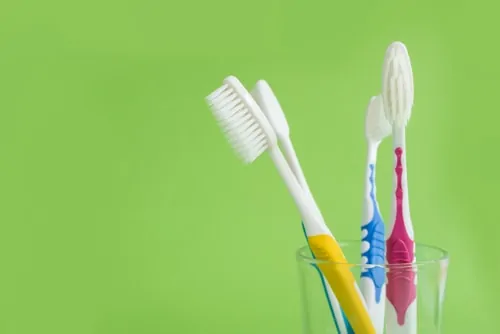
When was the last time you changed your toothbrush? A few months ago, a year ago, too long ago to remember? The truth is, there are a couple of things in life that you should change frequently — the oil in your car, the air filters in your home, and your toothbrush. But unlike your car, no light tells us when it’s time to change our toothbrush. Luckily, your dentist in Long Grove is here to help.
The good news is there is a recommendation from the American Dental Association that tells us how often we should change our toothbrush, which is almost as good as a change oil light. According to the ADA, and your dentist in Long Grove, we should all swap our toothbrushes every three or four months. However, there are some exceptions to this rule.
Even if it hasn’t been three or four months since you began using your toothbrush, there are some things you should look for that may indicate that it’s time to toss your toothbrush and replace it with a new one. Take a good look at the bristles on your toothbrush, and if you notice any of the following, it’s time to upgrade:
Another time when it would be appropriate to get a new toothbrush is following a cold or sickness. Once you start feeling better, toss your toothbrush, even if it still appears to be in good shape. The bacteria that made you sick in the first place can linger around on your toothbrush, and if you continue to use that same toothbrush after the sickness is over, you can reintroduce the bacteria to your body over and over again.
As we’ve mentioned above, you should replace your toothbrush after an illness to keep bacteria from re-entering the body. We recommend getting a new toothbrush every three months for a similar reason. The purpose of your toothbrush is to rid the teeth of bacteria, plaque, and tartar. But where do all of those things go? On your toothbrush. Now, rinsing your toothbrush every use will help wash away most of that. However, if the same toothbrush is used over, and over, and over again for a long time, the bacteria will start to take over. Additionally, a new toothbrush has straight, tight bristles. But as we use them, they tend to become frayed. When this happens, your toothbrush will not effectively clean your teeth and will increase your risk of decay.
There are some things you can do to help make your toothbrush last its full three or four-month lifespan.
Next time you pick up your toothbrush, take a quick look at the bristles to make sure it’s still in good, working condition. And as always, make sure to brush your teeth twice a day for two minutes each time, and see your dentist in Long Grove twice a year for professional cleanings and checkups.